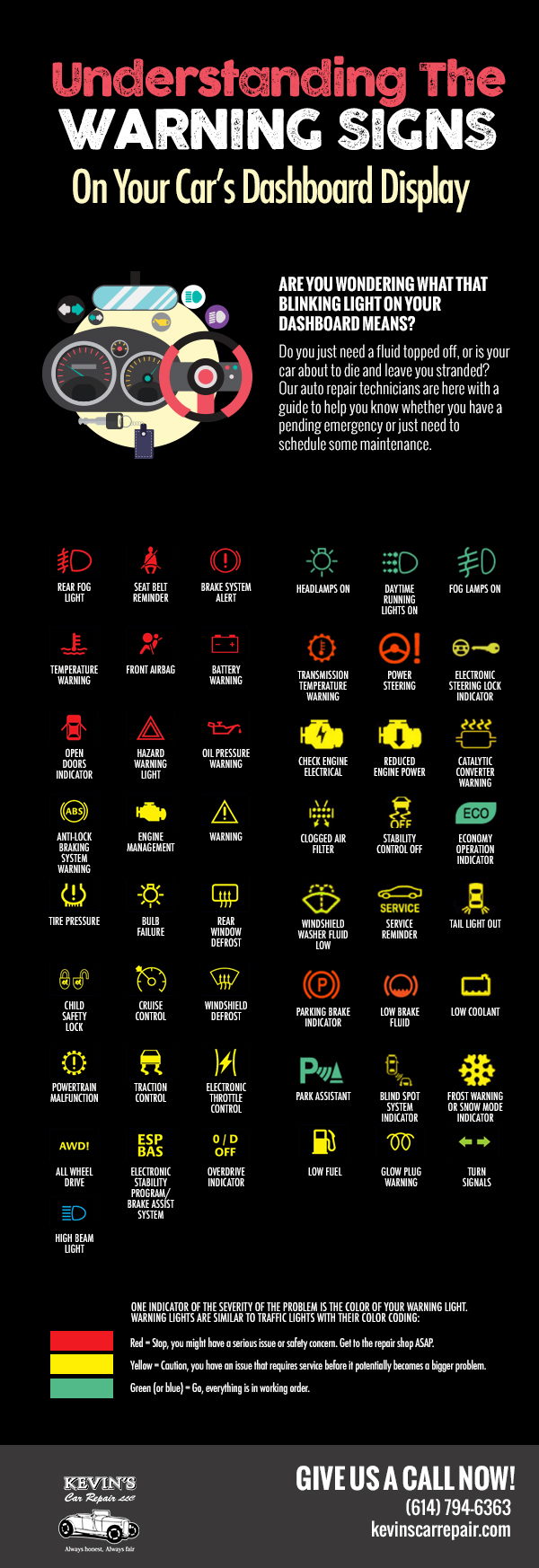Discovering The Genuine Analysis Of Your Car'S Warning Lights
Discovering The Genuine Analysis Of Your Car'S Warning Lights
Blog Article
Writer-Wilkinson Dreier
When you lag the wheel, those radiant warning lights on your control panel can be a little bit perplexing. Do you recognize what they're attempting to inform you concerning your car's health? Comprehending the value of these lights is vital for your security and the longevity of your automobile. So, the following time one of those lights appears, wouldn't you intend to decode its message properly and take the necessary actions to resolve it?
Common Caution Lights and Interpretations
Recognize typical warning lights in your cars and truck and comprehend their meanings to make certain secure driving.
One of the most normal caution lights include the check engine light, which indicates problems with the engine or discharges system. If this light begins, it's critical to have your automobile examined without delay.
The oil pressure warning light suggests low oil stress, needing instant interest to prevent engine damages.
A blinking battery light might suggest a damaged billing system, possibly leaving you stranded otherwise dealt with.
The tire pressure surveillance system (TPMS) light informs you to low tire stress, influencing car stability and gas efficiency. Overlooking nissan auto repair might result in hazardous driving conditions.
https://driverstrainingnearme40627.blogthisbiz.com/33649029/a-step-by-step-overview-to-altering-your-cars-and-truck-s-oil suggests a trouble with the anti-lock stopping system, endangering your capability to quit swiftly in emergencies.
Last but not least, the coolant temperature level warning light warns of engine getting too hot, which can lead to extreme damages otherwise fixed swiftly.
Understanding these typical caution lights will certainly aid you attend to issues without delay and keep risk-free driving problems.
Relevance of Prompt Interest
Recognizing the typical warning lights in your automobile is just the very first step; the significance of promptly dealing with these cautions can't be emphasized enough to ensure your safety when driving.
When a warning light brightens on your dashboard, it's your car's method of connecting a prospective concern that needs attention. Overlooking these warnings can lead to more extreme issues later on, endangering your safety and potentially costing you extra out of commission.
Prompt attention to warning lights can protect against break downs and accidents. For example, a flashing check engine light might indicate a misfire that, if left neglected, could cause damages to the catalytic converter. Resolving this promptly can conserve you from a pricey repair.
Likewise, a brake system cautioning light may indicate low brake liquid or worn brake pads, critical parts for your safety and security when driving.
Do It Yourself Troubleshooting Tips
If you discover a warning light on your dashboard, there are a couple of do it yourself troubleshooting suggestions you can attempt prior to looking for expert assistance.
The primary step is to consult your vehicle's manual to recognize what the particular caution light suggests. Occasionally the issue can be as simple as a loose gas cap setting off the check engine light. Tightening the gas cap may resolve the issue.
One more typical concern is a reduced battery, which can cause numerous warning lights. Examining the battery connections for corrosion and guaranteeing they're protected may fix the trouble.
If a caution light lingers, you can attempt resetting it by disconnecting the vehicle's battery for a couple of minutes and after that reconnecting it. Furthermore, inspecting your car's fluid degrees, such as oil, coolant, and brake fluid, can help repair warning lights connected to these systems.
Verdict
In conclusion, understanding your automobile's caution lights is necessary for keeping your automobile running smoothly and safely. By quickly attending to these signals and recognizing what they imply, you can prevent expensive fixings and potential break downs.
Remember to consult your automobile's handbook for particular information on each alerting light and act appropriately to make certain a trouble-free driving experience.
Remain notified, remain risk-free when traveling!
